
It is hardly surprising that Ports of Stockholm is one of the world’s largest passenger ports and one of Sweden’s largest freight ports. Here are some facts and figures relating to a normal year before the pandemic and the Ukraine war:
- 30,000 passengers pass through the ports every day
- 12 million ferry and cruise passengers every year
- 4 million people travel on archipelago traffic every year
- 300 cruise ships every year
- 9 million tonnes of freight pass through the ports every year
- 9,000 vessel calls per year or 25 calls per day
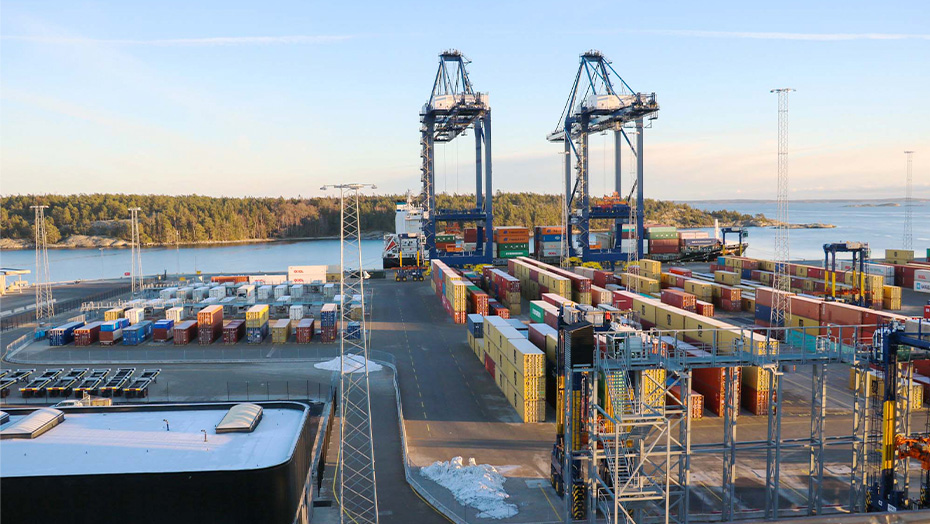
The most southerly port in Ports of Stockholm is the Port of Nynäshamn, which is served by Destination Gotland to Visby and by Polferries to Gdansk. The port also receives larger international cruise ships that do not have the opportunity, or need, to enter the Stockholm archipelago.
Just north of Nynäshamn lies Stockholm Norvik, a newly built container and RoRo port that has only been in operation for a little over two and a half years. The RoRo terminal in Stockholm Norvik as well as the Port of Nynäshamn are operated by Ports of Stockholm. Former harbour master Roger Backlund is Technical Operations Manager and Per Axelsson is responsible for stevedoring operations.
Some facts about the RoRo terminal:
- 12 hectares
- 525 metres of quays
- 200,000 units, capacity per year
- 142 parking spaces for trailers
- ITS - Intelligent Transport System
- 4,000 m2 of transshipment warehousing
- 7,000 m2 of holding space for import/export units.

“Our geographical location allows us to offer efficient import and export of freight to and from the whole of Sweden. For example, we have one of the country’s five border controls for food here. The Swedish Food Agency carries out controls on food products imported from outside the EU,” says Roger Backlund.
The container terminal in Stockholm Norvik is operated by Hutchison Ports, the world’s largest terminal operator. All other freight on trailers is handled by the Ports of Stockholm’s own staff. “The task is to unload and load boats and tranship different types of freight. A job that requires a coordinated team, well-functioning equipment, and respect for time. When a ship comes in, we only have a certain amount of time to load and unload, before the ship leaves the quay again according to its schedule,” Roger Backlund says.
“We work very closely with N.C. Nielsen and Per Löthner, our partner for Terberg terminal tractors. At the time of writing, we have eight RT223, four of which have recently been delivered.
“All terminal trucks require service, sometimes also repairs. And the trick is not to take a vehicle out of production for longer than necessary. N.C. Nielsen’s service personnel are always close at hand. For planned and regular service jobs, but of course they also come out in case of more acute interruptions. It’s a partnership we are extremely satisfied with,” concludes Roger Backlund.
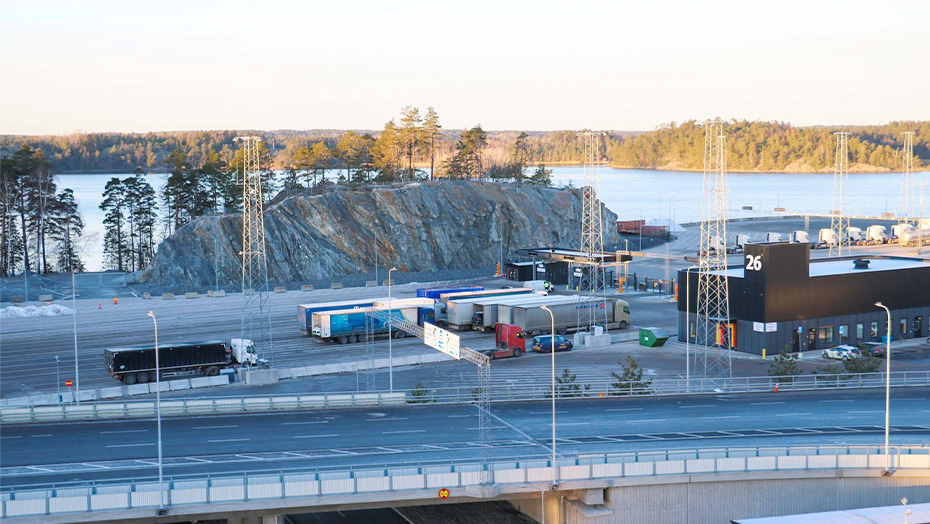
The most northerly port in Ports of Stockholm is the Port of Kapellskär, in the northern archipelago outside Norrtälje. Shipping routes have existed between Kapellskär and Åland and Finland since the Middle Ages, as this is the shortest distance, and the port is close to the open sea. Today, Kapellskär handles 40 per cent of Ports of Stockholm’s ferry freight to and from Finland, Estonia and Åland and has about one million passengers per year.
A modernisation project was completed in 2016, which included the construction of a completely new pier of 245 metres, while the two existing piers were upgraded. The port grew from three to five modern vessel berths. This almost doubled the port area and logistics, and security solutions were updated. Following the rebuilding and extension, the Port of Kapellskär is now well equipped to meet the needs of existing and future volumes and vessel sizes.
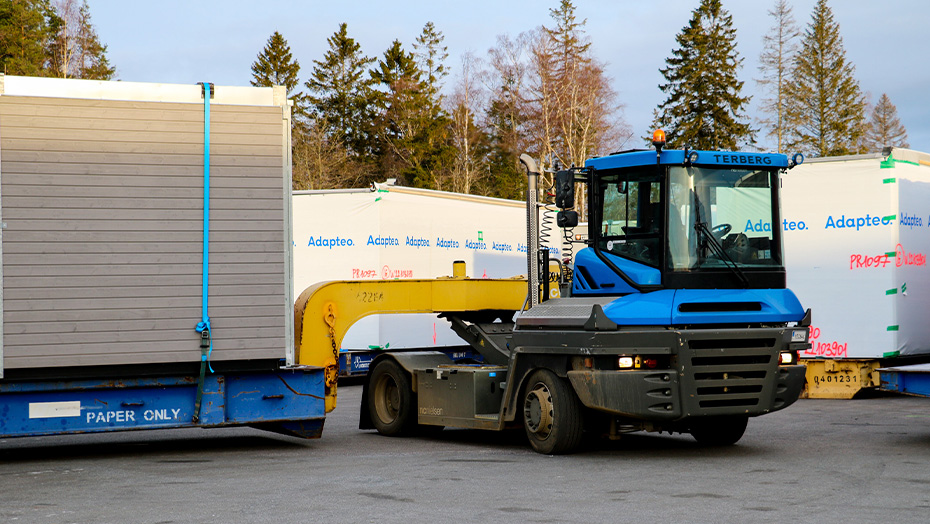
“A lot of freight is handled within the port. Among other things, house modules and construction site huts from Estonia. At present, this is about 1300 trailers per month of mixed freight. There is quite a bit of driving on and off boats with terminal tractors,” says Wille Gillemar, service and machine manager at the Port of Kapellskär. “We now have a total of nine RT223 in operation, four of which are completely new. We try to replace the terminal tractors after they have run for about 10,000 hours. Now it was time for a few machines to retire,” says Wille Gillemar.
“The service interval on the machines is about every 500 hours and is taken care of by N.C. Nielsen’s service team who come out to the port when the service is due. We can usually service two or three machines at a time. The turnaround time can range from the same day to a few days depending entirely on the nature of the task. N.C. Nielsen also takes care of repairs on our machines,” says Wille Gillemar.
“The terminal tractors operate a morning shift and an evening shift, and often stand still in the middle of the day, which is a natural consequence of the boat arrivals and departures,” says Lars-Ove Nordin, deputy stevedoring manager. “The production personnel also have some spare time in the middle of the day then return later in the afternoon,” Lars-Ove Nordin continues. “The same team operates morning and evening Monday through Sunday and then gets one week off. Then we’ll switch to another team. We have 24 flexible staff in total, including hourly employees,” concludes Lars-Ove Nordin.
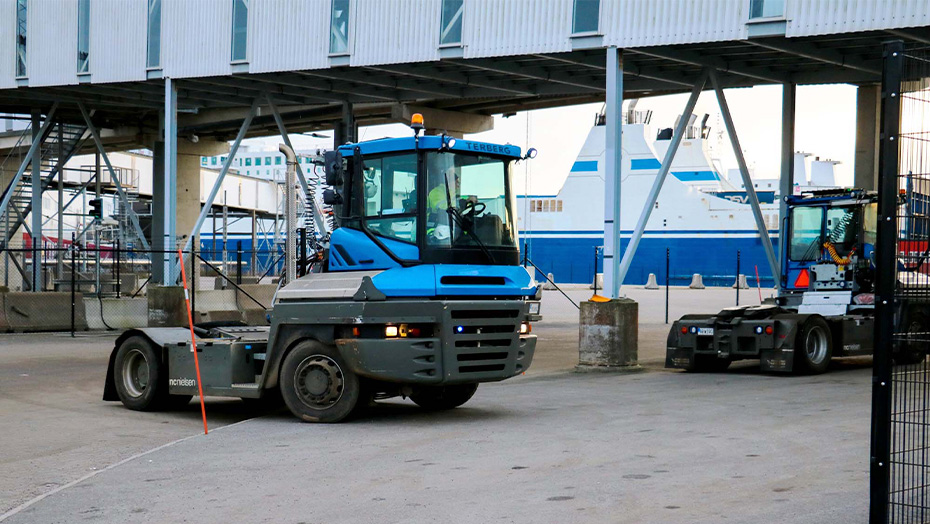
The Port of Kapellskär has had a very long and fruitful collaboration with N.C. Nielsen. “It must be at least 20 years since we first met them at a transport fair in Gothenburg, and we’ve been working happily together since then,” assures Wille Gillemar. “We have visited both the Nielsen factory in Denmark and the Terberg factory in Holland, which was impressive.”
“We mainly have contact with Per Löthner who has been with us for the last five years, but also with Bjarne of course, who takes care of all our machine services. We have a very nice relationship with N.C. Nielsen, and they are truly responsive to our needs,” concludes Wille Gillemar.
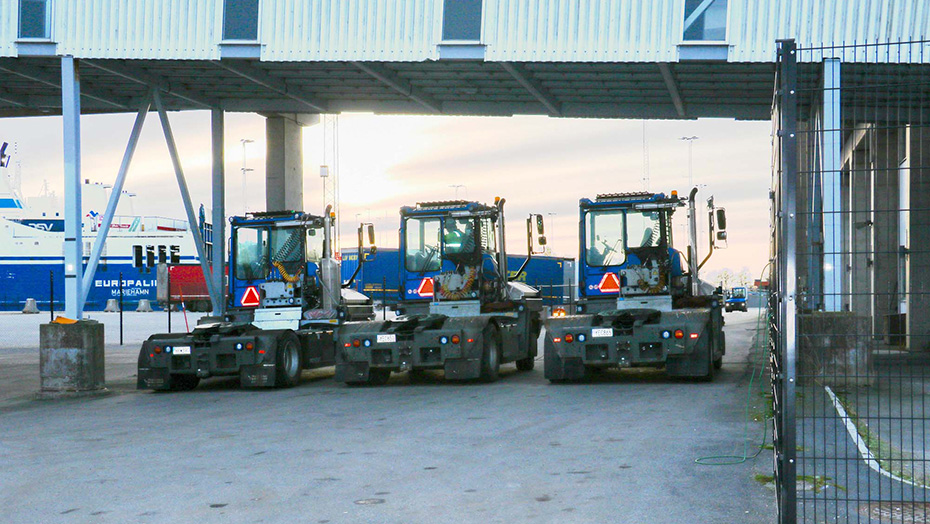
Vil du vide mere?
-
 Claus Lilleholt CEO - N.C. Nielsen AB and N.C. Nielsen AS
Claus Lilleholt CEO - N.C. Nielsen AB and N.C. Nielsen AS





































